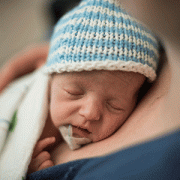Treating injured adolescents at pediatric trauma centers associated with lower mortality

As children mature into adolescence, they also transition from being cared for by pediatric healthcare providers to being cared for by health professionals who primarily treat adults. Controversy remains about whether a primarily pediatric or adult treatment location is optimal to meet the needs of injured adolescents. For this reason, the cutoff age for triaging children to pediatric versus adult trauma hospitals varies in different settings. A research team led by Randall S. Burd, MD, PhD, Chief of the Children’s National Health System Division of Trauma and Burn Surgery, found that injured adolescents treated at pediatric trauma centers (PTCs) had a lower mortality rate than injured adolescents treated at adult trauma centers (ATCs) or mixed trauma centers (MTCs), facilities that treat both adults and children, even when controlling for differences in patients.Trauma is a leading cause of death and acquired disability among adolescents. To determine any potential association between the type of trauma center and mortality rates, the research team examined 29,613 records for patients aged 15 to 19 years old drawn from the 2010 National Trauma Data Bank.“Trauma centers dedicated to the treatment of pediatric patients see a different adolescent population than do ATCs and MTCs,” Dr. Burd and colleagues write in an article published June 27 by JAMA Pediatrics. “After controlling for these differences, we observed that adolescent trauma patients have lower overall and in-hospital mortality when treated at PTCs.”
These findings, bolstered by additional research, have the potential to change the approach for triaging injured adolescents, says Dr. Burd, the paper’s senior author. The study findings suggest that commonly used age thresholds of 14 or 15 years might be safely adjusted higher.
Because the data were obtained from a large dataset, making that case will require closer examination – perhaps chart-by-chart analysis for each patient – to tease out nuances that differentiate care adolescents receive at different types of trauma hospitals, Dr. Burd says. “Are there differences in the process of care – or availability of specific resources – that account for the differences in outcome? Or, do the patients treated at each hospital type have differences in their injuries that we have not yet identified?”
Most adolescents (68.9 percent) included in the study were treated at an adult trauma center. In addition to being older, these youths were more likely to be severely injured and more frequently suffered severe injuries to the head, chest, and upper extremities. The most common traumatic injuries seen at adult centers resulted from children being passengers in motor vehicles (32.6 percent). Penetrating injuries from firearms (12 percent) and cutting or piercing (7.1 percent) were more common at adult centers.
Some 1,636 patients (5.5 percent) were treated at a pediatric trauma center, with many being transferred there from another hospital. Adolescents treated at pediatric trauma centers were more likely to be injured by a blunt rather than penetrating mechanism. The most common injuries seen at pediatric centers were injuries from a fall (25.9 percent) or injuries that resulted from being struck (26.1 percent).
“Because adolescents straddle the gap between pediatric and adult medicine, identifying differences in care among PTCs, ATCs, and MTCs will help determine the most appropriate triage strategies or identify practice strategies that can optimize the outcome for patients in this age group,” the authors conclude.
Related resources: Research at a Glance









